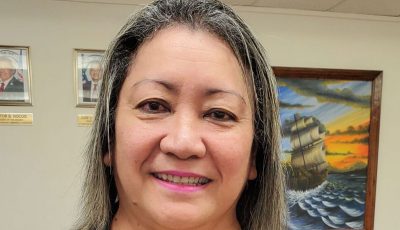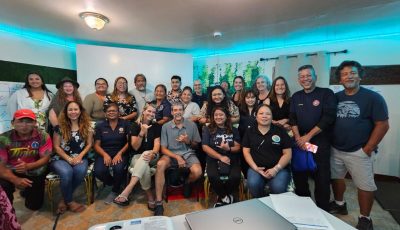Muña bares plans to further improve public hospital
After enduring birth pains the past couple of years, the Commonwealth Healthcare Corp. is confident that through recent and future innovations it would be successful in delivering improved healthcare to the local community.
CHCC acting CEO Esther Muña relayed this as one of the guest speakers of the Rotary Club of Saipan’s weekly meeting Tuesday at the Hyatt Regency Saipan.
One way CHCC has done to address the disconnect between the Commonwealth Health Center, public health, and behavioral health was the implementations of a Primary Care Access Point system.
“We needed to bring prevention to the patients walking through the hospital. Rather than opening just a triage clinic, we made it more of a primary care access point, and called it PCAP. So when patients come in for a non-emergent illness, our providers take the time to educate them and discuss better health options.”
Muña also touted CHCC’s rollout of its Electronic Medical Records or EMR in November, which made CHC the first public hospital in the region to fully implement an electronic health record.
“Having a fully functioning EMR that complies with the requirements of the Affordable Care Act and will improve patient care and safety is a major accomplishment,” she said, adding that the system will eventually be exported to the Tinian and Rota health clinics.
With funding from the Pacific Island Health Officers Association, they will soon formulate a strategic plan for CHCC in line with the tenets of Public Law 16-51, which gave birth to the agency in October 2011.
“Our contractor, WestCare Guam, has met with all managers, partners, and stakeholders to get information on how they perceive health care and where they want to see us go. We have to have our plan completed before summer. The goal of the strategic plan for the CHCC is to promote the health and wellness of people and visitors of the Commonwealth through providing quality medical care, promoting health and prevention programs, undertaking public health disease surveillance, and sound healthcare management.”
The current fiscal year will also see CHCC finally getting to manage their federal grants, which would allow it to manage indirect costs funded by these grants.
On top of this, CHCC will be putting out an RFP to come up with its own foundation. Muña said this would be different from the Volunteers Association and that it is her hope that CHCC will “go beyond our region to obtain additional funds.”
During its first couple of years as an entity, CHCC took a hit with the exodus of its physicians, but Muña happily reported that the hospital’s retention rate has improved and it now has five internal medicine doctors—up from only two in 2012—and it expects to have five pediatricians by summer.
Medical missioners, she said, have also been an important part of CHCC’s recent success, as it has welcomed visiting specialists by providing them lodging and stipends to provide specialties the hospital normally doesn’t offer.
“Seventh Day Adventist is our biggest partner with that and in the past months, our partnership brought in a dermatologist and now we’ll be bringing in an oral maxillofacial surgeon and a young girl with an aggressive ameloblastoma who would not be accepted by a provider because she only has Medicaid will be receiving treatment when this surgeon arrives next month.”
Muña also attributed improvements in CHCC’s healthcare quality to recent administrative measures and a better financial accounting system.



























